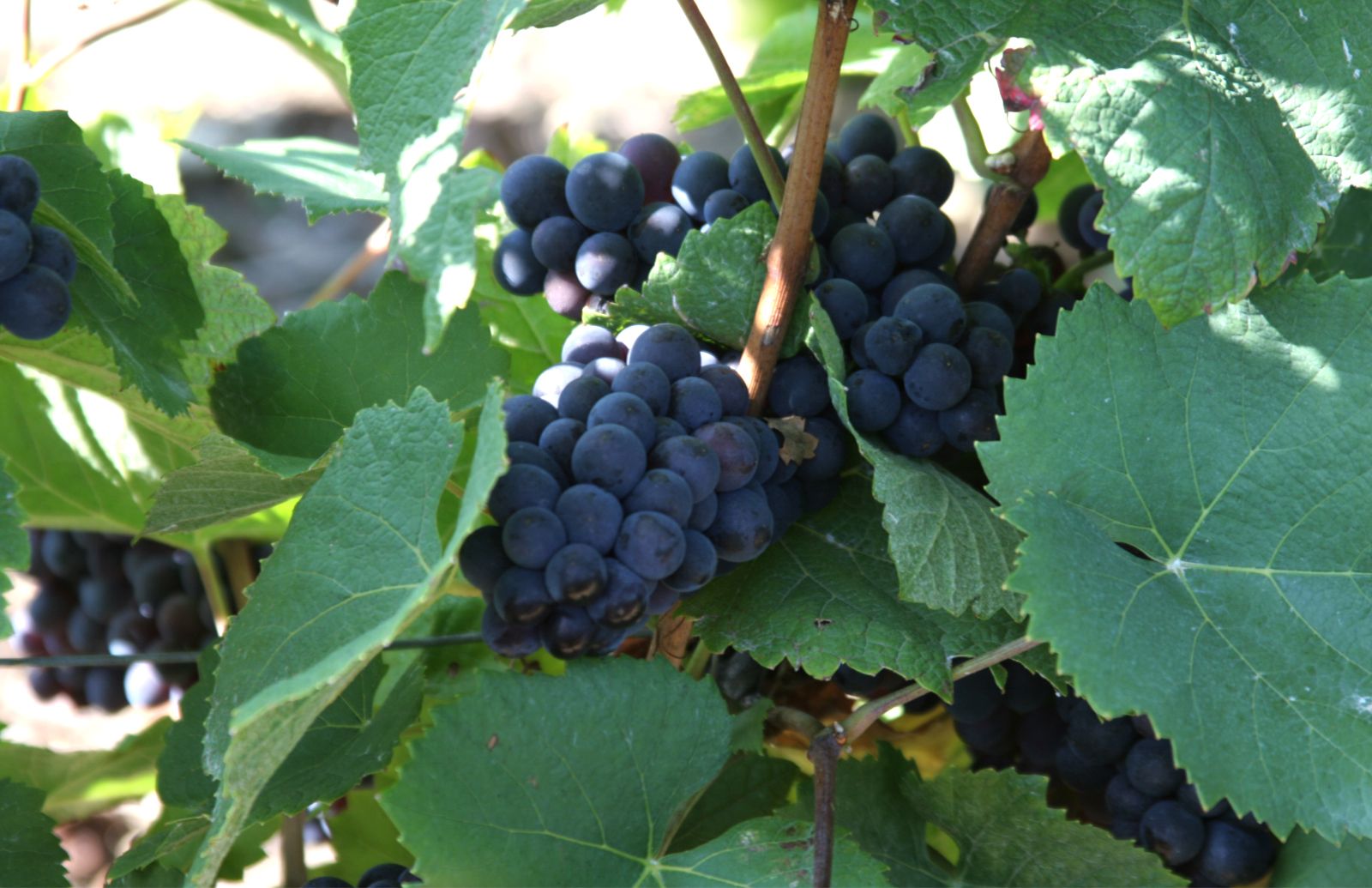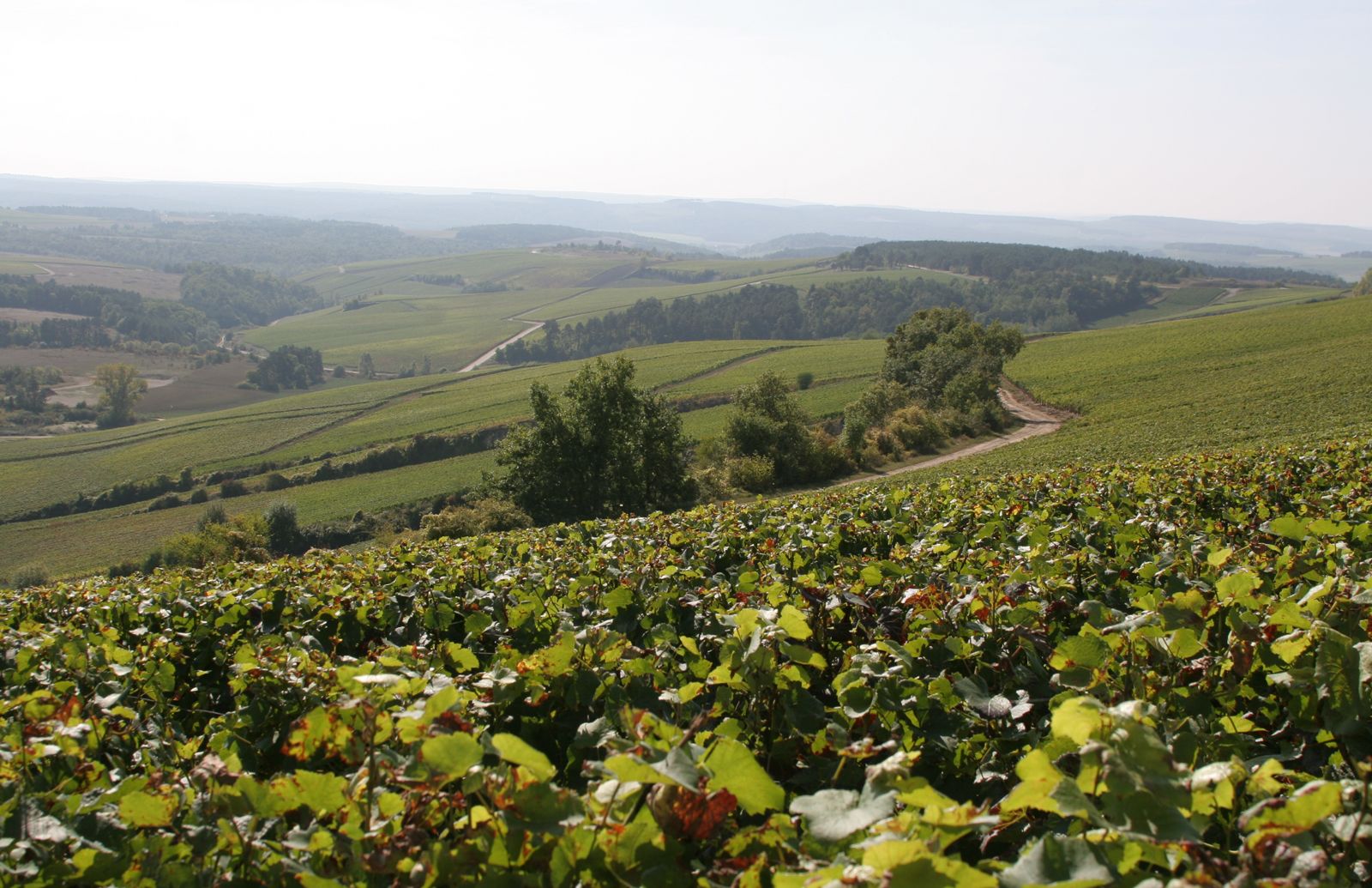
Champagne RICHARD CHEURLIN

On the slopes of the hills from the Barséquannais to the Barsuraubois, the culture of the vine is more than a thousand years old tradition.
It's more than 2000 years ago, the Gauls had adapted this southern culture on the sunniest slopes of the Upper Seine valley.
The wines, with subtle flavors, had already acquired at that time such a reputation that the Romans felt obliged to put quotas on them.
In the 1100's, Saint Bernard of Clairvaux, founder of the great Cistercian order, gave back to our vineyard notoriety as the "Vin de France" ». And it was the monks of the abbey of Mores in 1152 that created the vineyard of Celles sur Ource.
In the twelfth century, the Champagne Fairs that took place in Troyes, historic capital of Champagne, allowed local wines to get known far beyond the boundaries of the Kingdom of France.
A monk, Dom Perignon, developed the technique of blending different crus, which remains today the specificity of champagne.
Later, the use of the glass bottle and cork allowed the creation of a sparkling wine.
In the early eighteenth century, the first champagne houses offered the wine of kings to monarchs and the rich throughout Europe.
Voltaire wrote: ".The effervescence of this fresh wine reveals the true brilliance of the French people. »
Wars, phylloxera and arbitrary administrative decisions in the early twentieth century could not beat the tenacity of the champagne growers. And in the heart of the Côte des Bar, Celles sur Ource, a small village of 500 inhabitants, with about 40 winemakers who have chosen to remain independent by making their champagne on the property like their ancestors.
From pruning in spring up to the moment where you bring a glass to your lips, champagne is the fruit of a succession of work and maintenance, that takes place over a whole year.
Each of these operations determine the final quality of champagne, which is not offered for sale until after several years in the cellar.
Here are some photos of the different steps in the making of our champagnes :
In autumn, the cycle of the vine starts after the leaves fall. The vine has stored reserves and is then dormant.We take advantage of this to work the land.
We do earthing up to protect the young vines from frost and alternate screefing and ploughing to aerate and activate the microbiological life of our soils.
In winter, while the snow and cold change our rhythm, we slowly start to prune the vines.
Single Guyot , Royat Cordon system or Chablis system are different techniques that we use to shape our vines and make them productive.
80 % - Guyot
20 % - Chablis & Royat Cordon systems
Once the vine is pruned, the shoots that will bear the fruits are attached, so that the shoots of new branches are aired and well directed towards the sun.
In spring, the temperature warms and the vine comes out of dormancy. The vegetation starts to grow and is thus sensitive to spring frosts. When they occur, we protect our vines with a system of water spraying.
The bud is thus frozen and it's temperature maintained at 0°C, even if at the exterior it is minus
When the young branches grow, we remove the surplus buds and branches to meet our quality criteria. This operation is called desuckering and epamprage
Summer arrives, the vine is in a constant stage of growth.
The more the vine grows, we take off the palissage wire and the branches are trellised and separated in the direction of the sky.This helps us to have healthy grapes that will ripen.
Finally, we cut the surplus shoots both in hight and width so as the leaves and the grapes can best profit from the sun and the wind
Whilst awaiting the harvest we monitor the possible evolution of fungal diseases (downy mildew - mildew …) and apply if necessary some treatments according to the strict procedures of sustainable viticulture, in corelation with the information from our weather stations and our own observations.
And the cycle of the seasons closes. Autumn returns and it's time for the harvest.
After several controls for ripeness , analysis and tasting of the grapes, we decide on the date for picking them. The grapes must have an optimal ripeness and a balance in the mouth typical of the criteria of our house.
Picking is always done by hand so as to select the best grapes that are taken whole to the press.
As soon as the grapes arrive at our presses, they are pressed as quickly as possible so as to extract the best of the pulp and keep all the aromatic freshness.
Each must (juice) according to the parcel and the variety is placed in different tanks. This is specific vinification.
4000 kg of grapes gives us 2550 L of wine in AOC CHAMPAGNE
The rest of the juice is used for other products, such as the distilling of eaux de vie, vinegar…
The 2550L is divided into 2 :
-the « cuvee » that represents the first 2050 litres extracted, has the most finesse and elegance.
-the « tailles » is the following 500 litres , has the most richness and consistency.
This distinction will serve us to refine our blendings during the tastings in spring.
Once the musts have been prepared and identified in the cellar, the must will undergo cold settling during a night.
In the early morning we take the clear juice from the top of the tank and so eliminate the coarse lees, residues of earth and yeasts, before the alcoholic fermentation.
The yeasts of the must will change the sugar into alcohol and gas. We now go from must to a still wine*. « Still », because the gas escapes into the atmosphere !
Sugar yeasts alcohol + gas (prendre une photo de la formule sur une ardoise)
Then it's time for malolactic fermentation . Bacteria in the wine transforms the malic acid into lactic acid The latter is a soft and fruity acid that naturally gives a better stability to the wine.
The respect for local traditions doesn't exclude the use of modern oenologiical techniques . Our stainless steel tanks are thermoregulated so as to better control fermentation.
Perfect hygiene conditions allow us today to better master the mysterious alchemy of champagne.
It should be noted that more than 4,000 components, mineral salts, yeasts, minerals, come into play to get champagne.
The aim of all this care is to :
- naturally preserve the organoleptic quality of the champagne
- preserve the aromas
- obtain quality consistence
After several rackings for the clarification of our wines, and lots of time and love, we can now move on to the tasting of our wines.
Each racking is however the occasion to appreciate the evolution of our wines, the different parcels and different varieties, up to the blending.
For the blending, each wine grower has his secret...
Thanks to our specific vinification, we have a rich and varied palette of aromas to make our different blends.
The « Brut Sans Années » « BSA » :
We have made 2 distinct cuvees : the Carte or and the Cuvée H.
The aim of the work is to reconstitute through our specific vinification the special taste of each cuvee. For this we also use our reserve wines which allow us to make these blends despite differences in the harvests.
Vintages » :
Our vintages come from the specific vinification of our best and oldest vines.
These cuvees are the very image of the terroir that has been selected, but each vintage has the imprint of that year's climate.
Macerated» rosé :
Fruit of the same vine, this parcel of pinot noir is even more limited in it's yields, so as to give the grapes a very good aromatic richness.
We leave the grapes to macerate in tanks so that the extracted juice has colour and a powerful aroma.
When the tasting reveals what we are looking for, it's then that we empty the grapes , press them and blend the juices.
When the precious blends are ready, we then put the wines in bottles before summer comes. This is bottling.
We prepare yeasts and a liqueur made from our wines and sugar cane.
It's like this that the second alcoholic fermentation will take place in the bottle The yeasts will transform the sugar into alcohol and gas.
But unlike the harvest tanks, the gas created in the bottle can't escape.
The bubbles will mix with the wine and create the effervescence of our champagnes !
In our cellars, out of the light and with a constant temperature, we keep our champagnes several years before disgorging them and then selling them.
This aging is an important step for the quality of our wines, that brings them complexity and finesse.
Our Brut Sans Années ages between 15 months and 3 years depending on the cuvees.
Regarding our vintages, we offer them with between 4 and 10 years of aging, according to their potential and our wish to taste them...
When the cuvees are aged, riddling takes place On traditional pupitres or in gyropalettes, these allow the wine to be cleared slowly, bringing the yeast deposit to the neck.
Once the deposit is collected in the neck of the bottle, it's removed by ejecting it.
My father, in his youth, did it in the traditional way !
Today we plunge the bottle, head first, in a refrigerating solution at-27°C,so that the deposit freezes.
By opening the bottles, the deposit will be ejected naturally by the pressure inside.
The wine is then clear and we can add several drops of dosage liqueur depending on the required flavour: Extra-brut, Brut…
Our champagnes spend a minimum of 4 to 5 months with their corks before the bottles are put on sale after they have been carefully dressed.
Now you can taste this festive drink , with friends or loved ones. Cheers !